A thermodynamic system is taken from an original state to an intermediate state by the linear process shown in figure.

Its volume is then reduced to the original value from E to F by an isobaric process. Calculate the total work done by the gas from D to E to F.Solution in Gujrati
Total work done by the gas along DE path,
W1 =Area of △DEF + Area of □EFGH
=12EF×DF+EF×EH
=12GH×DF+GH×GF
=12(5.0−2.0)×(600−300)+(5.0−2.0)×(300−0)
=12×3×300+(3)(300)
=450+900
=1350 J ...(1)
Now work done on the gas at constant pressure from E to F,
W2=Area of □EFGH
=-(EF x GF)
=-(5.0-2.0)(300-0)
=-3 x 300
=-900 J..(2)
Now work done at constant volume from F to D
W3=P(ΔV)=P(0)
=0 ...(3)
∴ Total work done by the system along D-E-F
W=W1+W2+W3
=1350-900+0
∴ W=450 J
Topper's Solved these Questions
- THERMODYANMICS BOOK - KUMAR PRAKASHANCHAPTER - THERMODYANMICS EXERCISE - Section-B Numericals (Numerical From .Darpan. Based on Textbook )
11 Videos
- THERMODYANMICS BOOK - KUMAR PRAKASHANCHAPTER - THERMODYANMICS EXERCISE - Section-C (Objective Questions (VSQs))
45 Videos
- THERMODYANMICS BOOK - KUMAR PRAKASHANCHAPTER - THERMODYANMICS EXERCISE - Section-A (Try Your self )
90 Videos
- THERMAL PROPERTIES OF MATTERBOOK - KUMAR PRAKASHANCHAPTER - THERMAL PROPERTIES OF MATTEREXERCISE - Question Paper (Section - D) (Answer following in brief :) Each carry 4 marks
1 Videos
- UNITS AND MEASUREMENTBOOK - KUMAR PRAKASHANCHAPTER - UNITS AND MEASUREMENTEXERCISE - Section -F (Questions from Module )
20 Videos
Similar Questions
A gaseous system absorbs 450 cal heat. The work done by the system is 836.2 J. Find the change in internal energy of the gas in calorie. (J=4.186 J cal−1)
View SolutionCan whole of heat be converted into work ?
View SolutionWhich form of heat believed in before the modern time ?
View SolutionIn an experiment on the specific heat of a metal, a 0.20 kg block of the metal at 150∘C is dropped in a copper calorimeter (of water equivalent 0.025 kg) containing 150 cm3 of water at 27∘C. The final temperature is 40∘C. Compute the specific heat of the metal. If heat losses to the surroundings are not negligible, is your answer greater or smaller than the actual value for specific heat of the metal ?
View SolutionIf the error in measurement of radius of a shpere is 2% then the error in determination of volume of the sphere will be …………
View SolutionA thermodynamic system is taken from an original state D to an intermediate state E by the linear process shown in (figure)
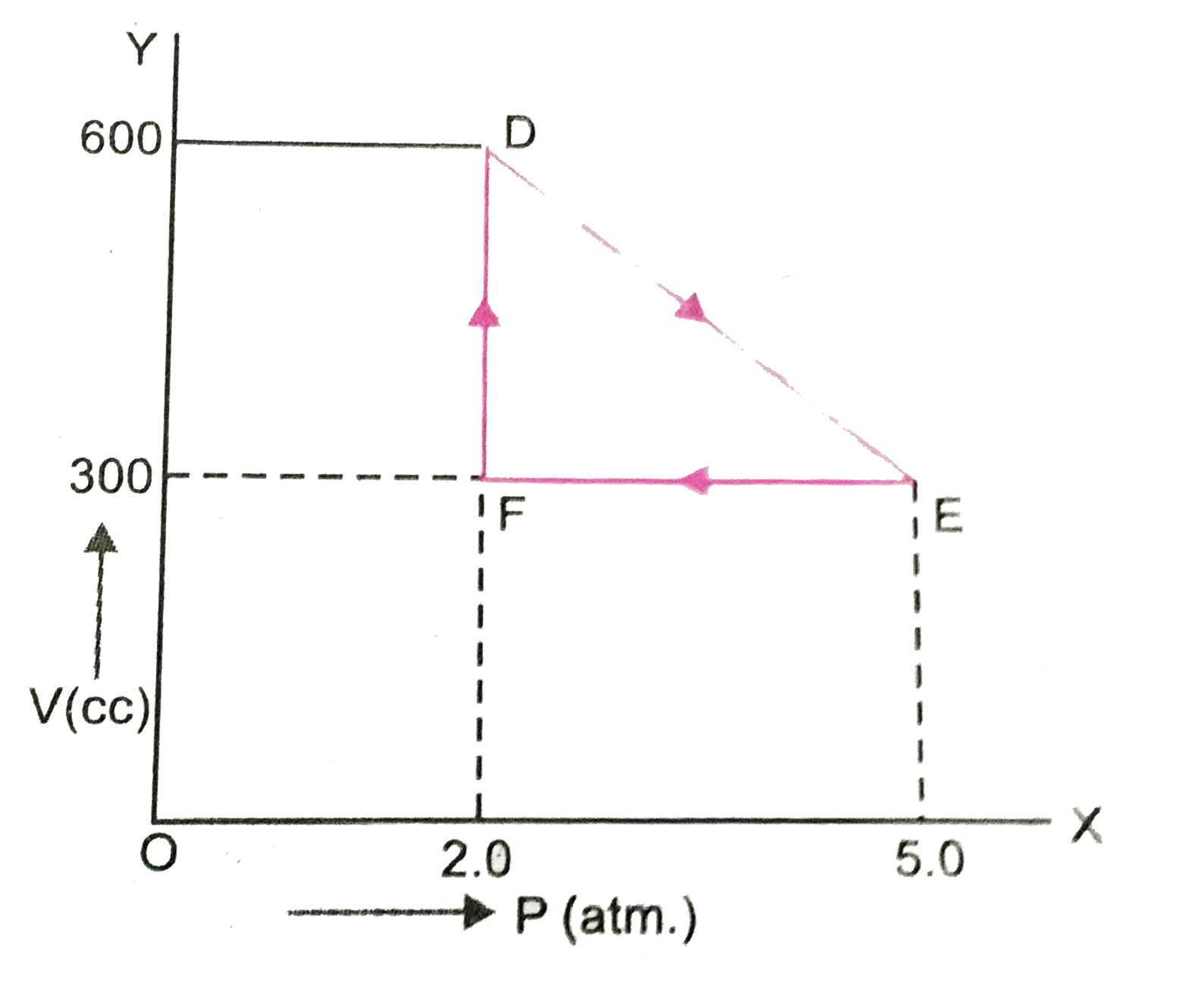
Its volume is then reduced to the original value from E to D via F by an isobaric process. Calculate the total work done by the gas from D to E to F to D.
View Solutiona thermodynamic process is carried out from an original state D to an intermediate state E by the linear process shown in figure. The total work is done bvy the gas from D to E to F is
View Solutionकिसी उष्मागतिकीय निकाय को मूल अवस्था से मध्यवर्ती अवस्था तक चित्र में दर्शाये अनुसार एक रेखीय प्रक्रम द्वारा ले जाया गया है । एक समदाबी प्रक्रम द्वारा इसके आयतन को E से F तक ले जाकर मूल मान तक कम कर देता हैं। गैस द्वारा D से E तथा वहां से F कुल किए गए कार्य का आकलन कीजिए ।

View Solutionकिसी ऊष्मागतिकीय निकाय को मूल अवस्था से मध्यवर्ती अवस्था तक चित्र में दर्शाये अनुसार एक रेखीय प्रक्रम व्दारा ले जाया गया हैं ।
एक समदाबीय प्रक्रम व्दारा इसके आयतन को E से F तक ले जाकर मूल मान तक कम कर देते हैं । गैस व्दारा D से E तथा वहाँ से F तक कुल किये गये कार्य का आंकलन कीजिए ।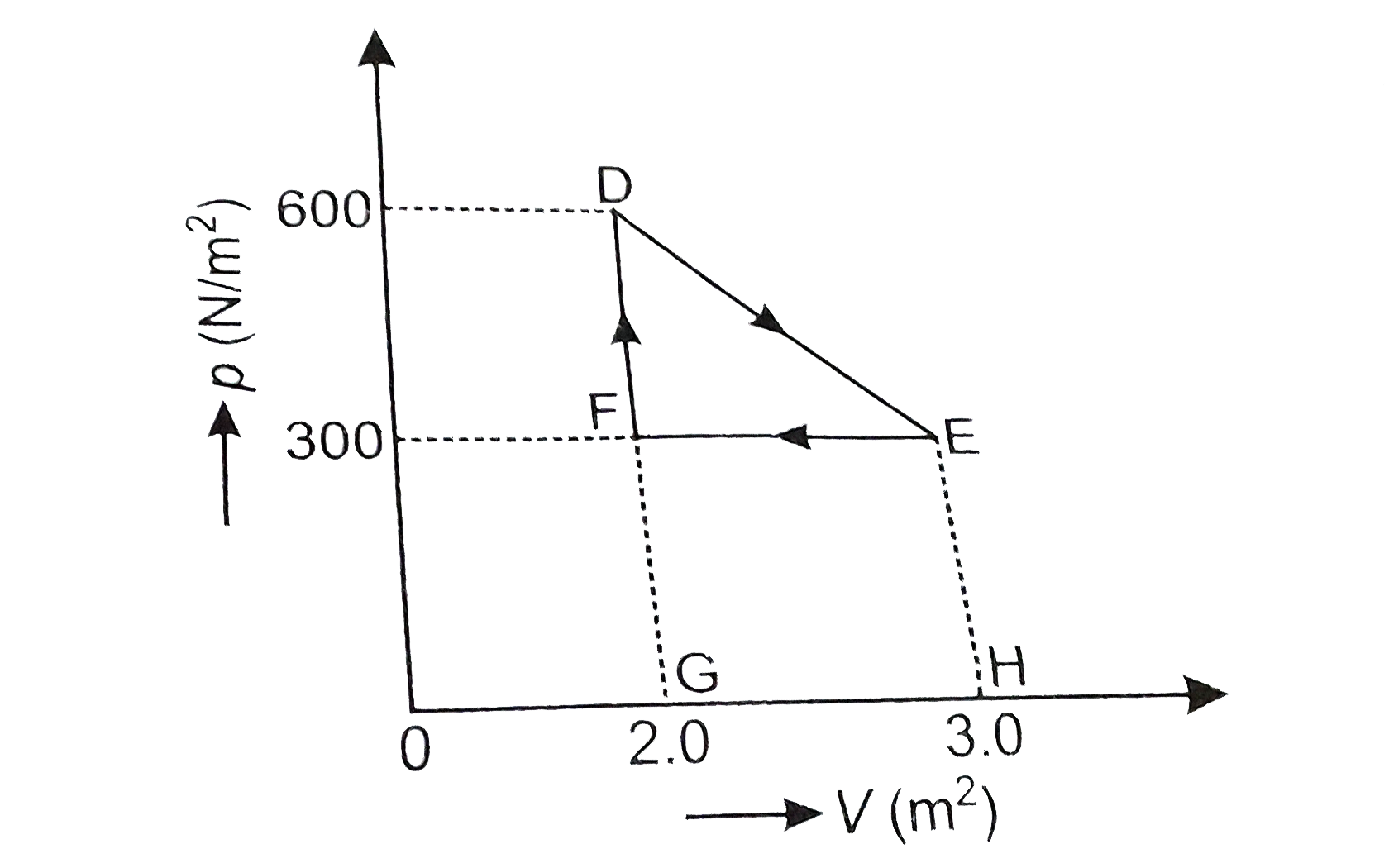
View Solutionकिसी ऊष्मागीतकीय निकाय को मूल अवस्था से मध्यवर्ती अवस्था तक चित्र में दर्शाये अनुसार एक रेखीय प्रक्रम द्वारा ले जाया गया है ।
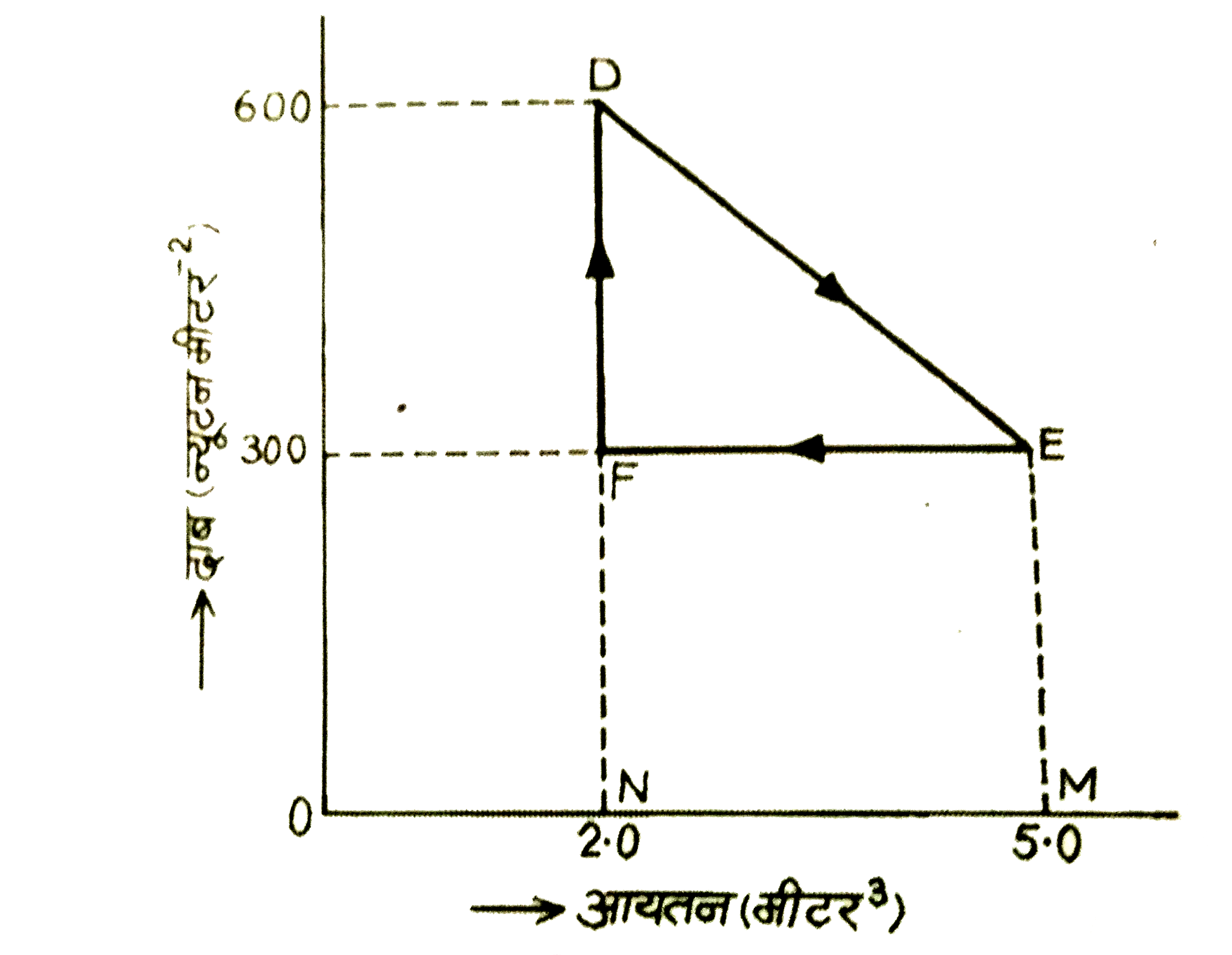
एक समदाबी प्रक्रम द्वारा इसके आयतन को E से F तक ले जाकर मूल मान तक कम कर देते है । गैस द्वारा D से F तथा वहाँ से F तक कुल किए गए कार्य का आकलन कीजिए ।
View SolutionA thermodynamic system is taken from original state D to an intermediate state E by the linear process shown in figure.
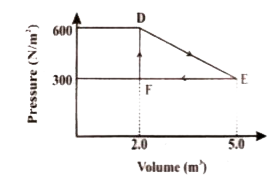
Its volume is then reduced to the original value from E to F an isobaric process. Calculate the total work done by the gas from D to E and E to F.
View SolutionA thermodynamic system is taken from an original state to an intermediate state by the linear process shown in Fig.
Its volume is then reduced to the original value from E to F by an isobaric process. Calculate the total work done by the gas from D to E to F.
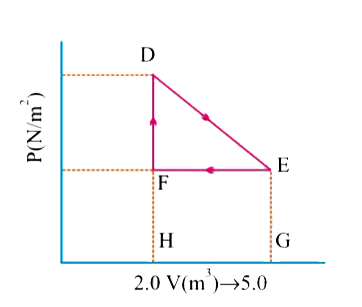
View Solutionএকটি তাপগতীয় সংস্থাকে প্রাথমিক অবস্থা D থেকে অন্তর্বর্তী অবস্থা E-তে নিয়ে যাওয়া হল [চিত্র 1.67]। এরপর সমচাপ প্রক্রিয়ায় E থেকে F-এ নিয়ে যাওয়া হল এবং গ্যাসের আয়তন কমে প্রাথমিক আয়তনের সমান হল। D থেকে E এবং E থেকে F অবস্থায় যাওয়ার জন্য মােট কৃত কার্যের মান নির্ণয় করাে।
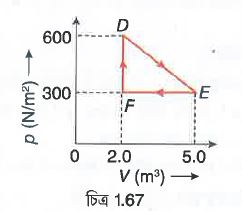
View SolutionA thermodynamic system is taken from an original state to an intermediate state by the linear process shown in Fig. (12.13) Its volume is then reduced to the original value from E to F by an isobaric process. Calculate the total work done by the gas from D to E to F
View SolutionA thermodynamic system is taken from an original state to an intermediate state by the linear process shown in Fig. (12.13)
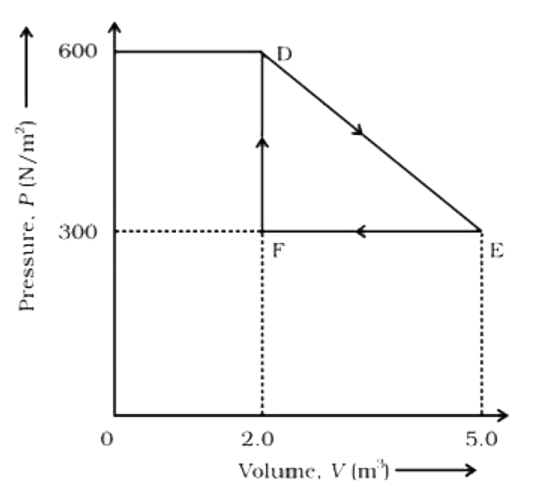
Its volume is then reduced to the original value from E to F by an isobaric process. Calculate the total work done by the gas from D to E to F
View Solution
